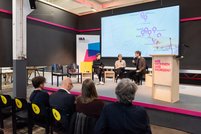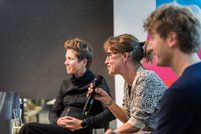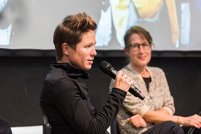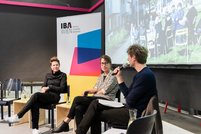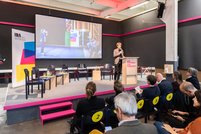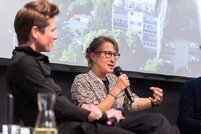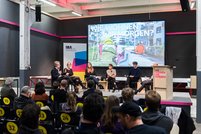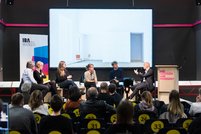Ground Floor Management - Where is the Key to Successful Neighborhood Development?: IBA Talk
2022
IBA-Talk
In order to develop neighborhoods sustainably, a lot of things have to be planned: A small-scale mix of residential, work and shopping facilities ensures short distances and avoids traffic and emissions. The design of the ground-floor zones with retail, commercial, art and cultural facilities, gastronomy and social offerings brings life to the Grätzel, even in the evenings.
read moreNew formats of working and producing, cooperative formats, and new patterns of working and living are making non-residential uses increasingly diverse. This is also reflected in the demands on new space offerings, on their planning, and ultimately on neighborhoods. In this context, the urban pedestal is becoming an experimental space for smaller-scale, commercial uses. Non-residential uses can be implemented on the first floor or beyond, creating a qualitative transition between public space and private living space.
Through accompanying communication processes, however, it can be possible to involve interested parties for such uses in the projects at an early stage and also in the long term. What successful experience reports are there from the cooperation of the various actors in neighborhood development? Where are the communication and coordination processes anchored, who finances them, and who assumes responsibility?
Program
Learning from each other cooperatively:
in conversation Andrea Steiner, Sozialbau & Mirjam Mieschendahl, im Grätzl
moderated by Ernst Gruber, wohnbund: consult
On the podium:
Where is the key to successful neighborhood development?
Alexander Kopecek, wien 3420 and managing director of aspern Einkaufsstraßen GmbH | Peter Roitner, chairman Heimbau, project Mio Sonnwendviertel (requested) | Katharina Kirsch-Soriano da Silva, Caritas Stadtteilarbeit, | Petra Hendrich, realitylab | Roland Krebs, superwien
Moderation: Ernst Gruber, wohnbund: consult
Photos
Videos
ERDGESCHOSSMANAGEMENT - WO LIEGT DER SCHLÜSSEL ZUR ERFOLGREICHEN QUARTIERSENTWICKLUNG?: IBA-TALK

